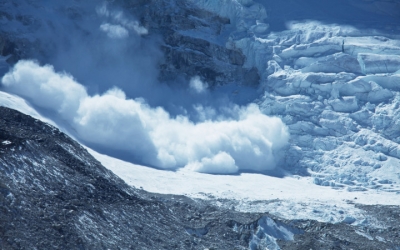What is avalanche?

During an avalanche, a mass of snow, rock, ice, soil, and other material slides swiftly down a mountainside. Avalanches of rocks or soil are often called landslides. Snowslides, the most common kind of avalanche, can sweep downhill faster than the fastest skier.
A snow avalanche begins when an unstable mass of snow breaks away from a slope. The snow picks up speed as it moves downhill, producing a river of snow and a cloud of icy particles that rises high into the air. The moving mass picks up even more snow as it rushes downhill. A large, fully developed avalanche can weigh as much as a million tons. It can travel faster than 320 kilometers per hour (200 miles per hour).
Avalanches occur as layers in a snowpack slide off. A snowpack is simply layers of snow that build up in an area, such as the side of a mountain. In winter, repeated snowfalls build a snowpack dozens of meters thick. The layers vary in thickness and texture.
The bonds between the layers of a snowpack may be weak. Melted snow that refreezes may cause a slick coating of ice to form on the surface of a layer. A new snowfall may not stick to this slippery layer, and it may slide off. During spring thaw, melted snow can seep through a snowpack, making the surface of a lower layer slippery. Added weight or vibration can easily send the top layers of a snowpack hurtling downhill.
Credit : National Geographic Society
Picture Credit : Google
Comments
No comments